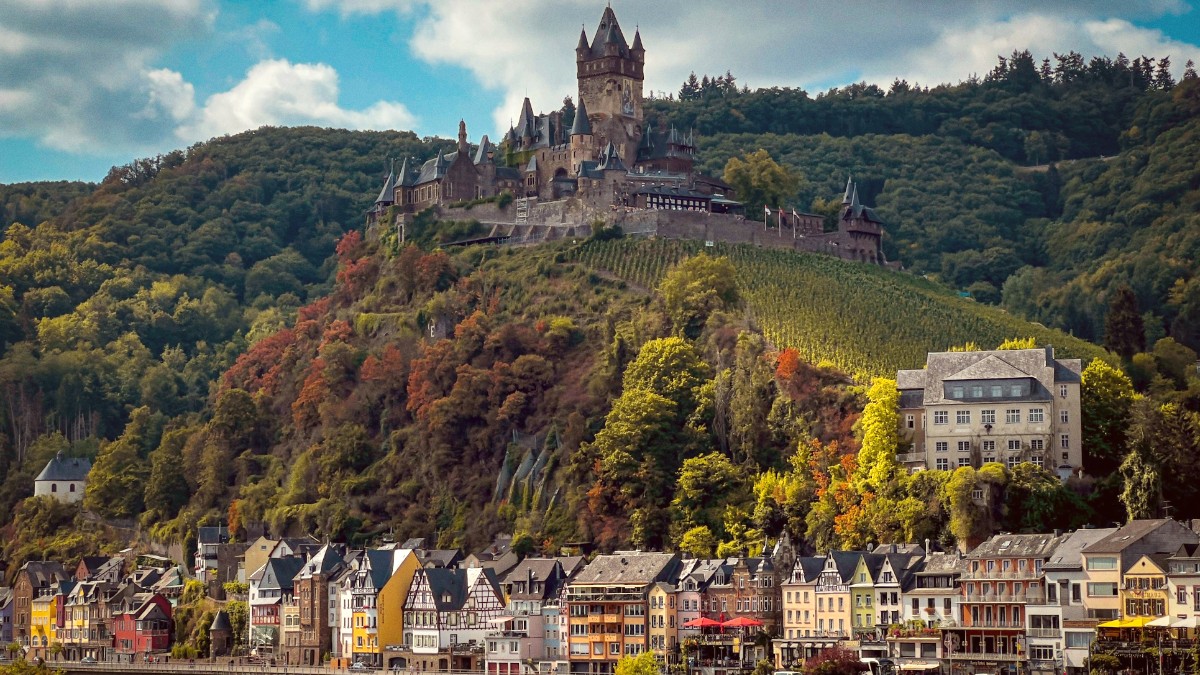
Rhineland Palatinate, Germany
A place where every view feels like a postcard and every moment promises a lasting memory. The region presents a blend of natural beauty and human heritage, creating an atmosphere unlike anywhere else. This guide provides information to plan your journey into this enchanting landscape, ensuring you enjoy the best of what the Rhine Valley offers. Get ready to experience a place where history comes alive against a backdrop of breathtaking scenery.
The Rhine Valley, notably the Upper Middle Rhine Valley, stretches for approximately 65 kilometers (40 miles) between the cities of Bingen and Koblenz in the German state of Rhineland-Palatinate. This specific segment of the Rhine River holds UNESCO World Heritage status due to its unique combination of geological features, historical significance, and cultural landscape.
The region is characterized by dramatic river bends, notably the "Boppard Hamm," a striking loop in the river near the town of Boppard. Terraced vineyards climb the slopes, often so steep they require manual cultivation. Numerous smaller rivers and streams feed into the Rhine, carving their own picturesque valleys. These tributary valleys offer additional scenic beauty and smaller, quieter wine regions.
The Rhine Valley is a rich and layered history, spanning millennia and deeply influencing European development. Its story begins in Roman times, when the Rhine served as a frontier of the Roman Empire, marked by forts and settlements like Mainz (Mogontiacum), a significant Roman legionary camp. After the fall of Rome, the Franks, and later the Holy Roman Empire, established their power along the river.
The Rhine became a main trade route, connecting northern and southern Europe, which brought both prosperity and conflict. The river’s commercial importance led to the proliferation of castles, built by feudal lords who levied tolls on passing ships. These castles, numbering over 40 in the Upper Middle Rhine Valley alone, represent a tangible link to the medieval period, each with its own tales of sieges, feuds, and noble families.
Rhine as frontier, forts & settlements like Mainz.
Main trade route, proliferation of castles & tolls.
"Romantic Rhine" movement, inspiring poets, castle restoration.
Opened valley to tourism, establishing global reputation.
Protection of cultural landscape as a living historical document.
The Rhine Valley became a powerful symbol of German identity and longing for an united nation in the 19th century, inspiring the "Romantic Rhine" movement. Poets like Heinrich Heine, Lord Byron, and Victor Hugo immortalized the river and its legends, especially the Loreley myth, in their works. This period saw an increased interest in preserving and restoring the castles, transforming them from military strongholds into romantic symbols.
Throughout both World Wars, the Rhine Valley experienced direct impact due to its strategic location, yet its cultural heritage largely survived.
Today, the UNESCO World Heritage designation protects this unique cultural landscape, recognizing its value as a living historical document. The valley offers visitors a direct connection to these past eras, inviting them to explore ancient ruins, wander through medieval towns, and experience a landscape shaped by centuries of human endeavor.
The Rhine Valley provides a captivating blend of relaxation, historical discovery, and outdoor activity, making it a compelling destination for diverse interests. A trip here promises not just a vacation, but an immersive journey into the heart of Germany.
The Rhine Valley offers travelers a condensed yet profound experience of German culture, history, and natural beauty. This region delivers breathtaking river vistas, where the powerful Rhine winds its way through a narrow gorge flanked by steep, vine-covered hills. Over 40 medieval castles and ruins dot the landscape, each telling a story of knights, emperors, and legends. Many of these fortifications are open for tours, providing a tangible link to a bygone era.
A highlight of the region is its esteemed wine culture. Charming medieval towns like Bacharach, Boppard, Rüdesheim, and St. Goar invite exploration with their cobblestone streets, half-timbered houses, and welcoming atmosphere.
Unparalleled views of castles and vineyards from the water.
Extensive network along both banks with impressive views.
Hiking and cycling paths like Rheinsteig and Rheinradweg.
The dining scene reflects the region's hearty traditions, with opportunities to savor local specialties like Flammkuchen, Sauerbraten, and fresh asparagus in spring. Traditional Weinstuben (wine taverns) offer a taste of local life, pairing regional dishes with locally produced wines.
Travel through the Rhine Valley presents several transport options. Scenic river cruises provide unparalleled views of the castles and vineyards from the water, allowing for a relaxed journey between towns. An extensive train network runs along both banks of the river, offering efficient travel with equally impressive views.